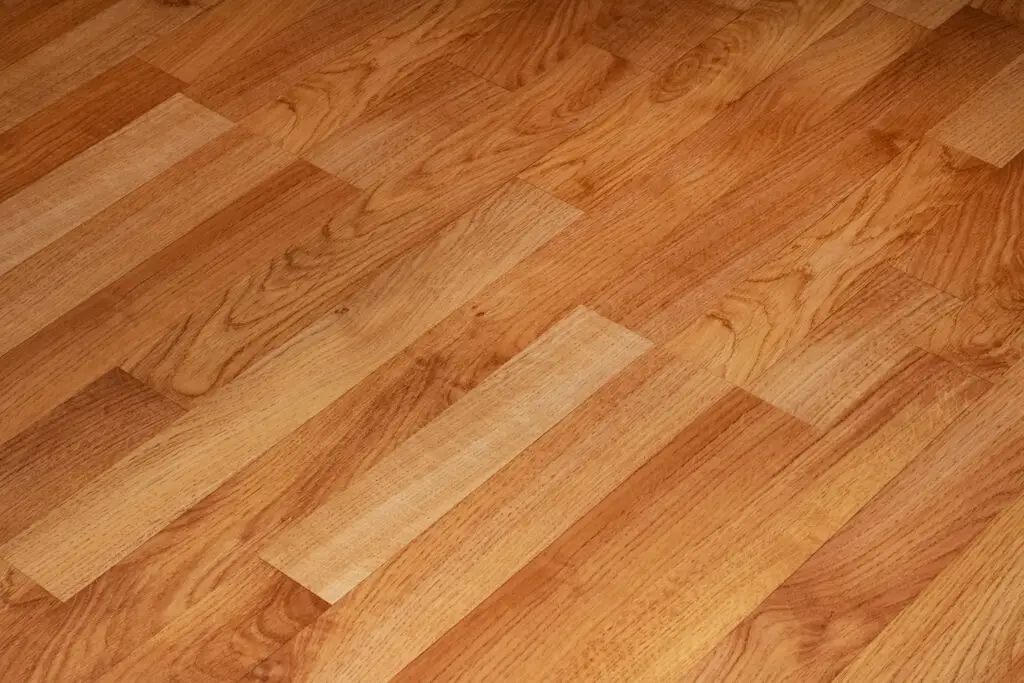When refinishing or installing new hardwood floors, one of the most important decisions you’ll make is the type of finish sheen. The sheen level significantly impacts the floor’s appearance, how it interacts with light, and its perceived durability. The two most popular choices are satin and semi-gloss. While both offer excellent protection, their aesthetic and practical differences can make one a better fit for your home than the other.

Key differences between satin and semi-gloss finishes
The primary distinction between satin and semi-gloss finishes lies in their level of reflectivity, which is determined by the amount of flattening agents (like silica) mixed into the polyurethane.
- Satin Finish:
- Reflectivity: Has a low to medium sheen, reflecting less light than semi-gloss. It has a soft, subtle glow.
- Appearance: Offers a sophisticated, understated look. It’s often described as having a “warm” or “natural” feel, mimicking the look of oil-rubbed wood without the oil finish’s maintenance.
- Light Interaction: Diffuses light, which helps to hide minor imperfections, scratches, and dust.
- Semi-Gloss Finish:
- Reflectivity: Has a medium to high sheen, reflecting significantly more light than satin. It has a noticeable shine.
- Appearance: Creates a more formal, polished, and traditional look. It enhances the wood grain and color with a brighter, more reflective surface.
- Light Interaction: Reflects light directly, which can make a room feel brighter and larger, but also highlights dust, scratches, and imperfections more readily.
The difference is typically measured on a gloss meter. While exact percentages vary by manufacturer, generally:
- Satin: to 40% gloss level.
- Semi-Gloss: 40% to 60% gloss level.
(Full-gloss finishes are typically over 70%, and matte/flat finishes are below 10−15%.)
Pros and cons of satin finish hardwood floors
Satin is currently the most popular finish choice for hardwood floors due to its balance of aesthetics and practicality.
Pros of Satin Finish
- Hides Imperfections Well: Its diffused light reflection is excellent at camouflaging minor scratches, scuffs, dents, and everyday dust. This makes it a great choice for busy households or homes with pets.
- Modern and Contemporary Look: Satin provides a sophisticated, natural, and less overtly “shiny” appearance that aligns well with modern interior design trends.
- Less Glare: Reduced reflectivity means less harsh glare from windows or artificial lighting, creating a softer, more comfortable ambiance.
- Easier Maintenance (Visually): While equally durable, satin floors appear cleaner longer because they don’t highlight dust and smudges as much as glossier finishes.
- Versatile: Blends well with various decor styles, from rustic to contemporary, without being too distracting.
Cons of Satin Finish
- Slightly Less Dramatic Impact: If you’re looking for a highly polished, “wow factor” shine, satin might seem too understated for your taste.
- Can Appear Less “Clean” if Not Maintained: While it hides minor imperfections, a neglected satin floor can sometimes appear duller if not cleaned regularly, as the dust can build up subtly without being immediately highlighted by light reflection.
- Requires Even Application: Like all finishes, it needs to be applied evenly, but inconsistencies in application might be slightly more noticeable than with flat finishes, though less so than with high gloss.
Pros and cons of semi-gloss finish hardwood floors
Semi-gloss was historically the standard for hardwood floors and remains a strong contender for those who prefer a more traditional, vibrant look.
Pros of semi-gloss finish
- Enhanced Depth and Richness: The higher reflectivity makes the wood grain “pop” and intensifies the color, giving the floor a rich, deep appearance.
- Brighter, More Formal Look: A semi-gloss finish can make a room feel brighter and more spacious by reflecting more ambient light. It lends itself well to more traditional or formal settings.
- Classic Aesthetic: For many, the subtle shine of semi-gloss is what they associate with classic, beautifully maintained hardwood floors.
- Easy to Clean (Physically): While it shows dust more, the smooth, reflective surface is generally easy to wipe down or mop for physical cleaning.
Cons of semi-gloss finish
- Highlights Imperfections: Every scratch, scuff, dent, and even pet paw prints and dust bunnies are more visible due to the direct reflection of light. This means semi-gloss floors require more frequent cleaning to look their best.
- Shows Glare: Can create distracting glare from windows, overhead lights, or even electronic screens, especially in brightly lit rooms.
- Less Forgiving of Application Errors: Any inconsistencies in the application, such as brush strokes or uneven thickness, will be more apparent in a semi-gloss finish.
- Can Appear Too “Shiny” for Some: For those who prefer a more natural or subtle aesthetic, semi-gloss might feel too reflective or “plastic-like.”
How to choose the right finish for your home
The best finish for your hardwood floors depends on a combination of personal preference, lifestyle, and the overall design aesthetic of your home. Consider the following factors:
- Lifestyle and Traffic Level:
- High-Traffic Areas (e.g., living rooms, hallways, kitchens, homes with kids or pets): Satin finish is often recommended. Its ability to camouflage wear and tear means your floors will look better between cleanings and require less frequent “visible” maintenance.
- Low-Traffic Areas (e.g., formal dining rooms, bedrooms): Semi-gloss can be a beautiful choice here, where the emphasis is on visual appeal and less on hiding daily wear.
- Room Size and Lighting:
- Smaller Rooms or Rooms with Less Natural Light: Semi-gloss can help make these spaces feel larger and brighter by reflecting more light.
- Large, Bright Rooms with Abundant Natural Light: Satin can prevent excessive glare and create a softer, more inviting atmosphere.
- Desired Aesthetic:
- Modern, Contemporary, or Natural Look: Satin is the go-to choice for a sleek, understated, and organic feel.
- Traditional, Formal, or Polished Look: Semi-gloss delivers that classic, high-end shine that enhances the richness of the wood.
- Tolerance for Imperfections:
- If you’re meticulous about your floors always looking pristine and are prepared for more frequent cleaning and polishing, semi-gloss might be acceptable.
- If you prefer a finish that’s more forgiving of daily life and requires less visual “touch-up,” satin is the better option.
- Ease of Maintenance (Perceived vs. Actual):
- Both finishes are equally durable in terms of wear resistance. However, satin will appear cleaner for longer due to its light-diffusing properties, making it feel lower maintenance on a day-to-day basis. Semi-gloss, while easy to clean, will show dust and smudges more readily, requiring more frequent wiping down to maintain its shine.
Recommendation:
- For most homes and lifestyles today, especially those with active families or pets, a satin finish is often the most practical and aesthetically pleasing choice. It offers a beautiful, modern look that is forgiving of everyday wear and tear.
- Choose semi-gloss if you specifically desire a brighter, more formal, and polished look and are prepared for the increased visibility of dust and imperfections.
Ultimately, the best way to decide is to look at samples of both finishes on actual wood if possible, or observe them in different lighting conditions. Consider what kind of ambiance you want to create in your home and how much time you’re willing to dedicate to daily floor maintenance.
